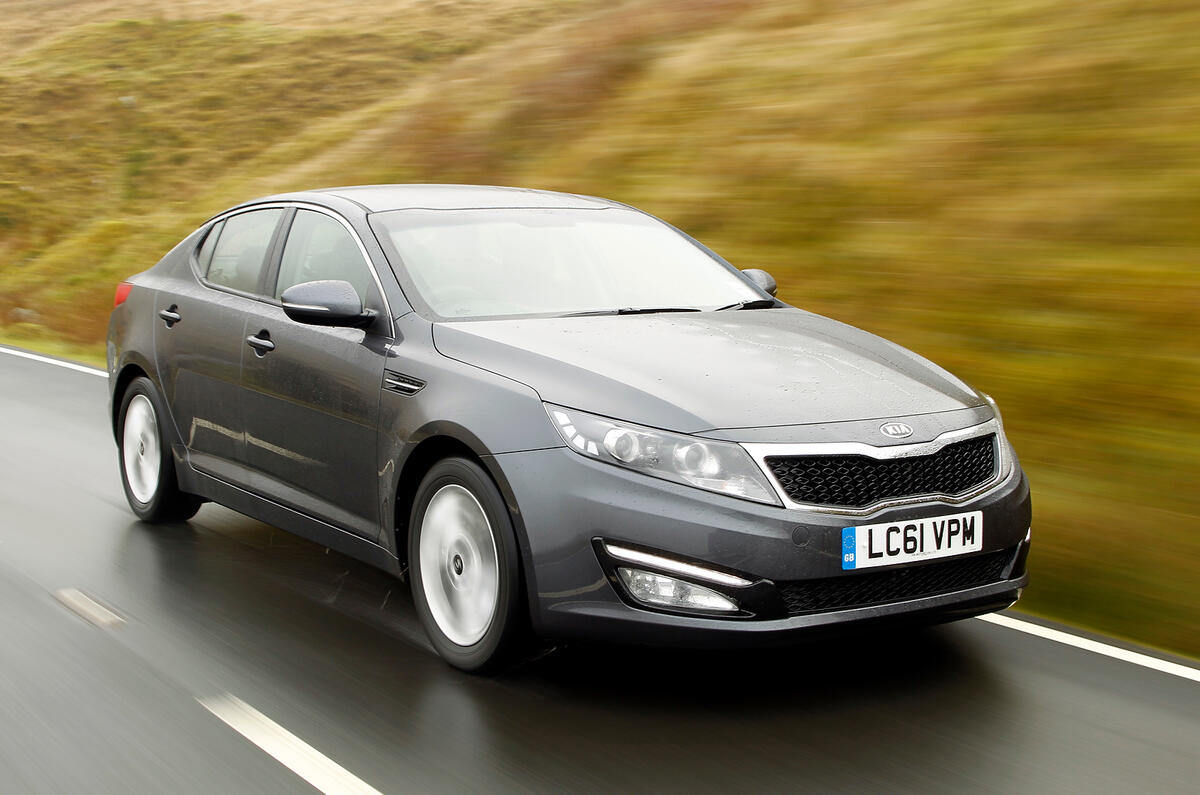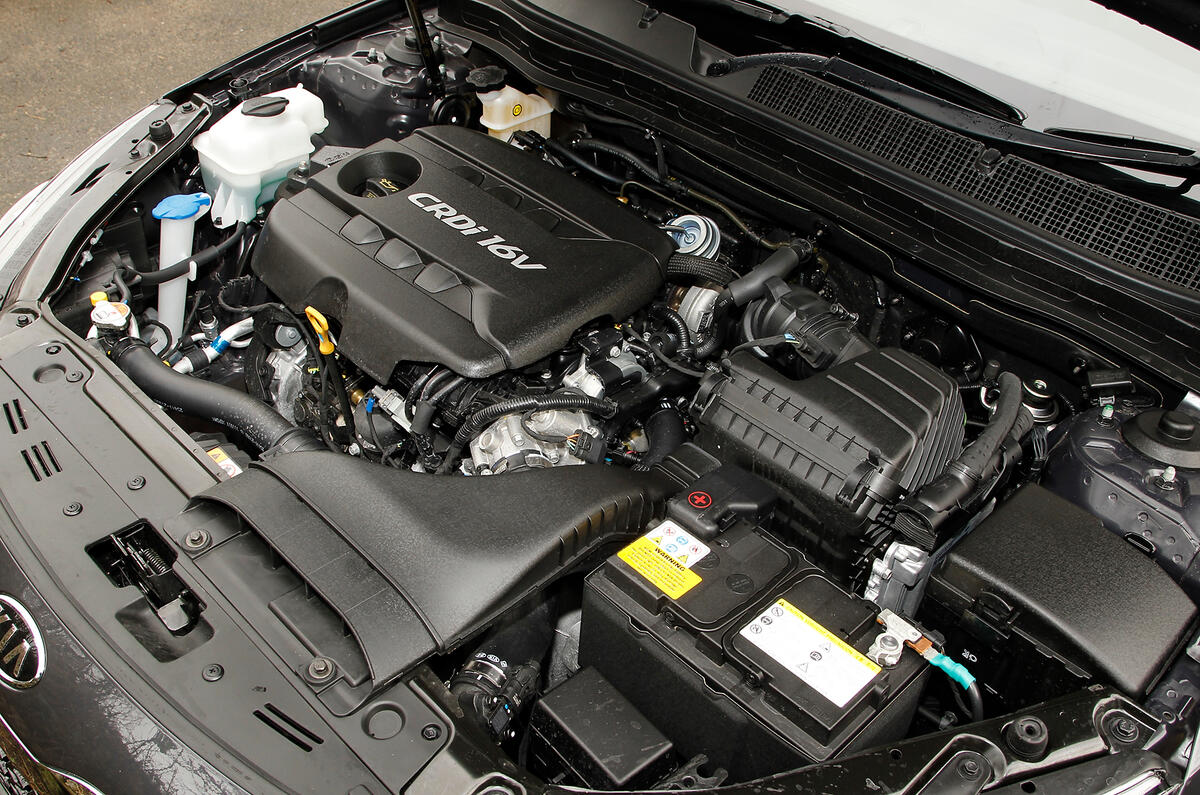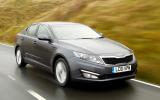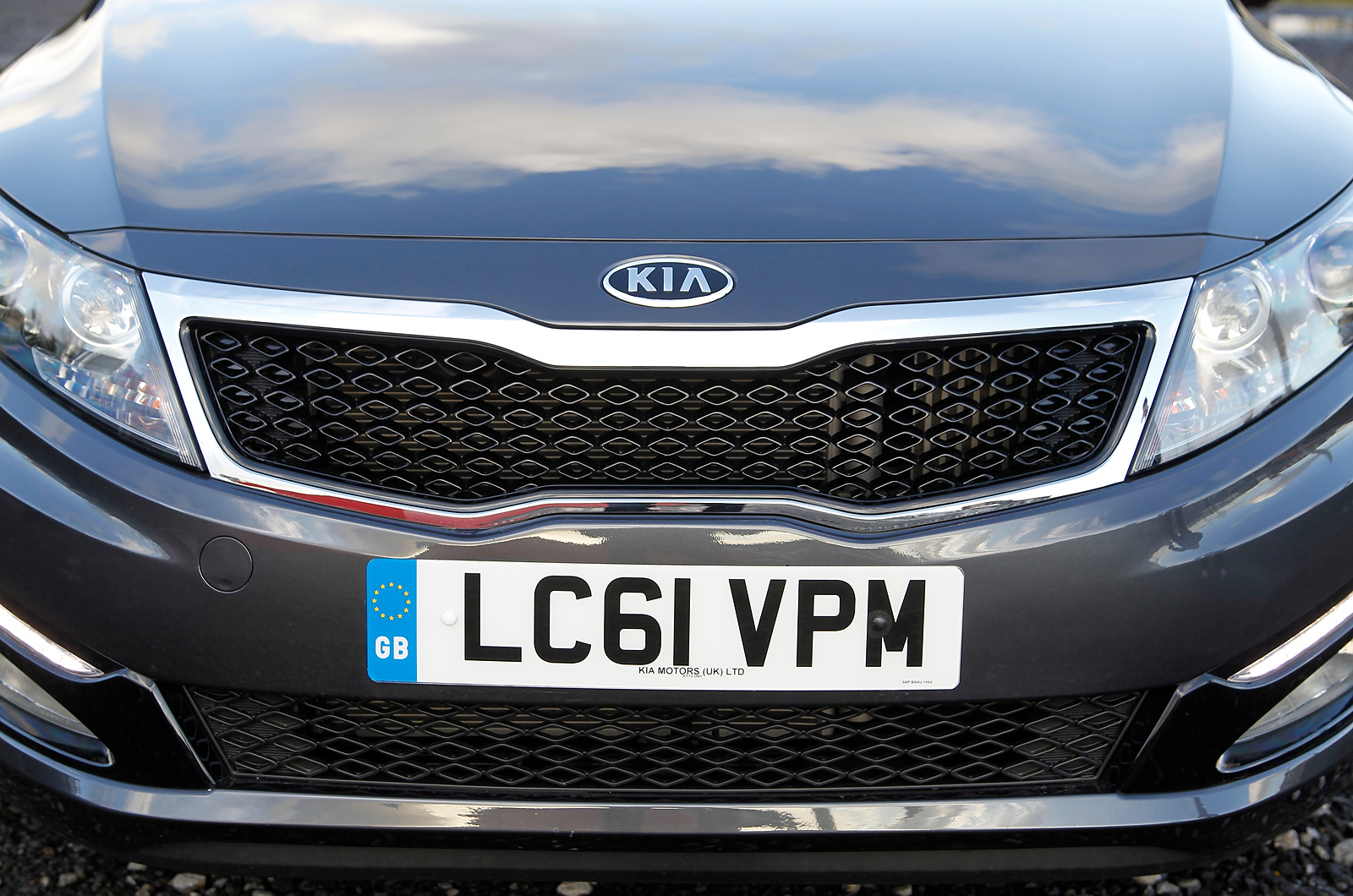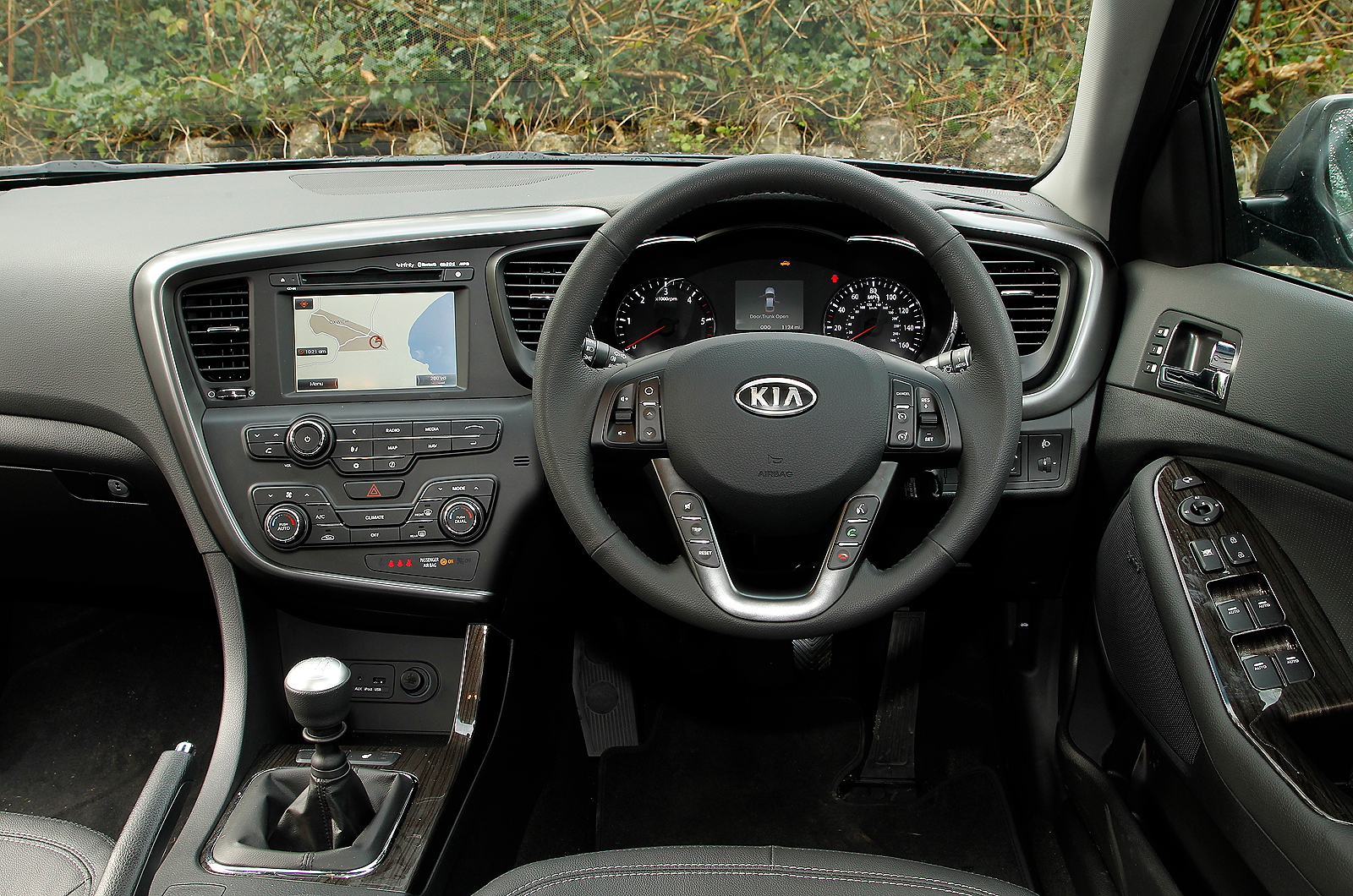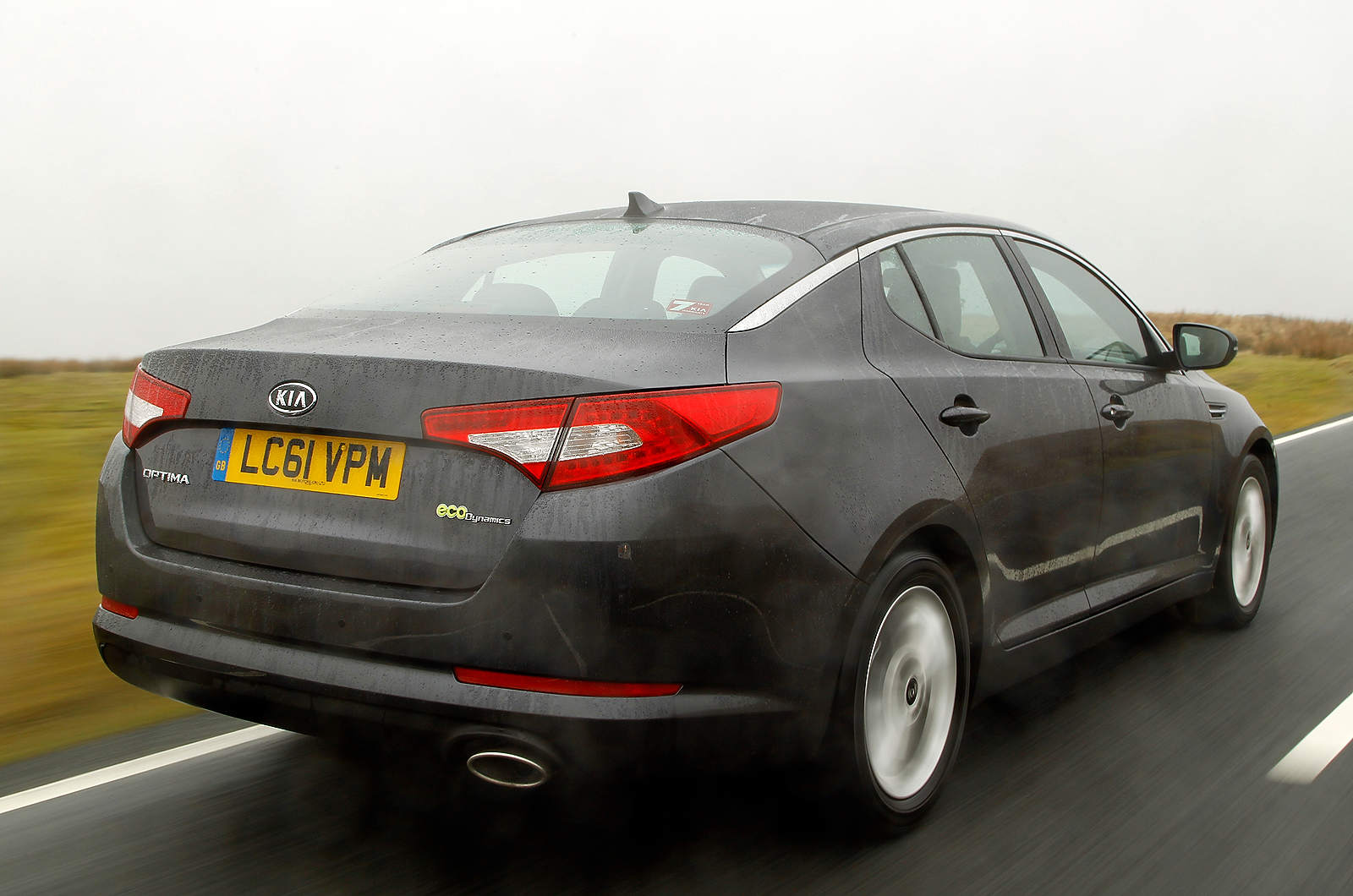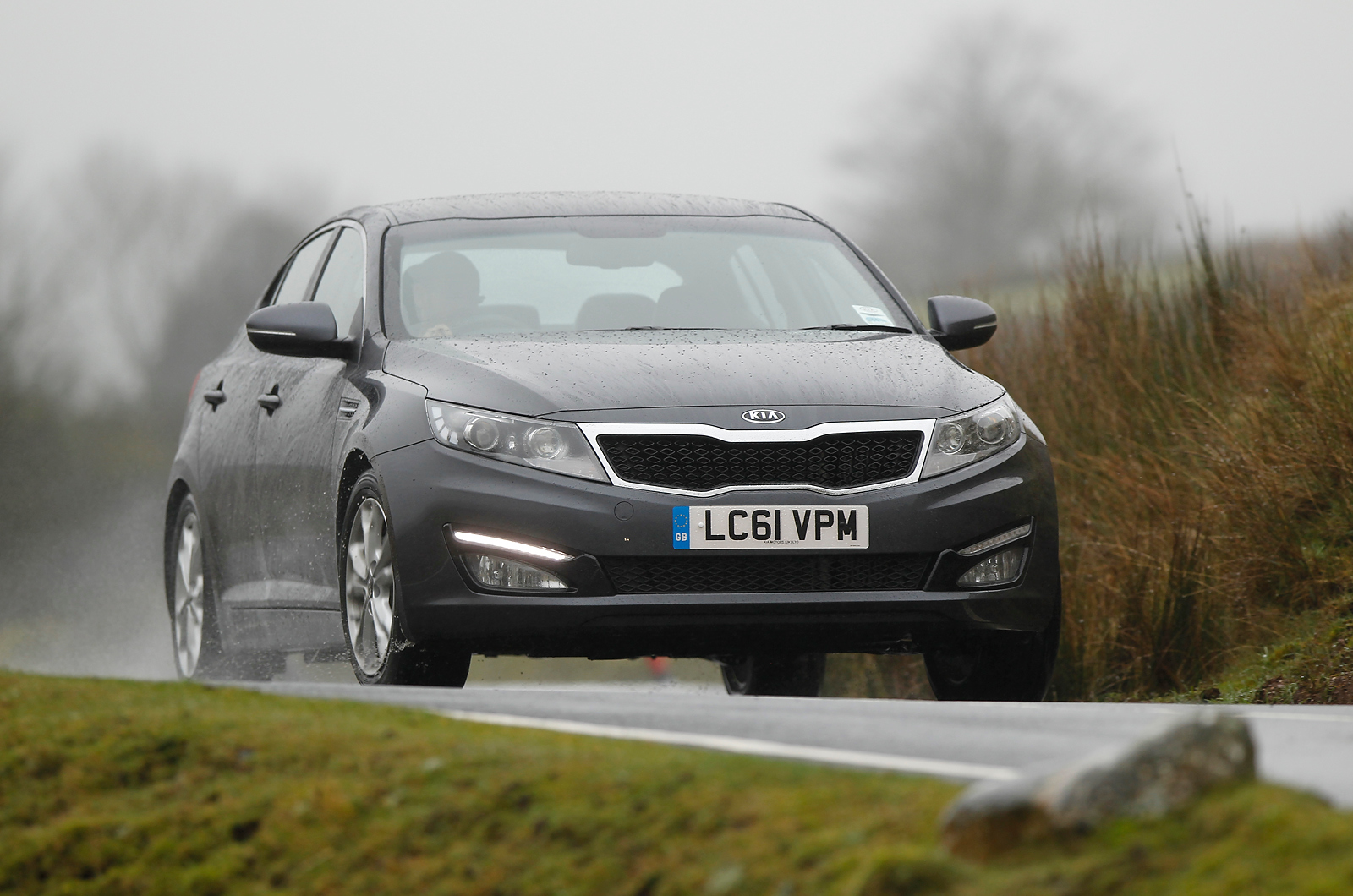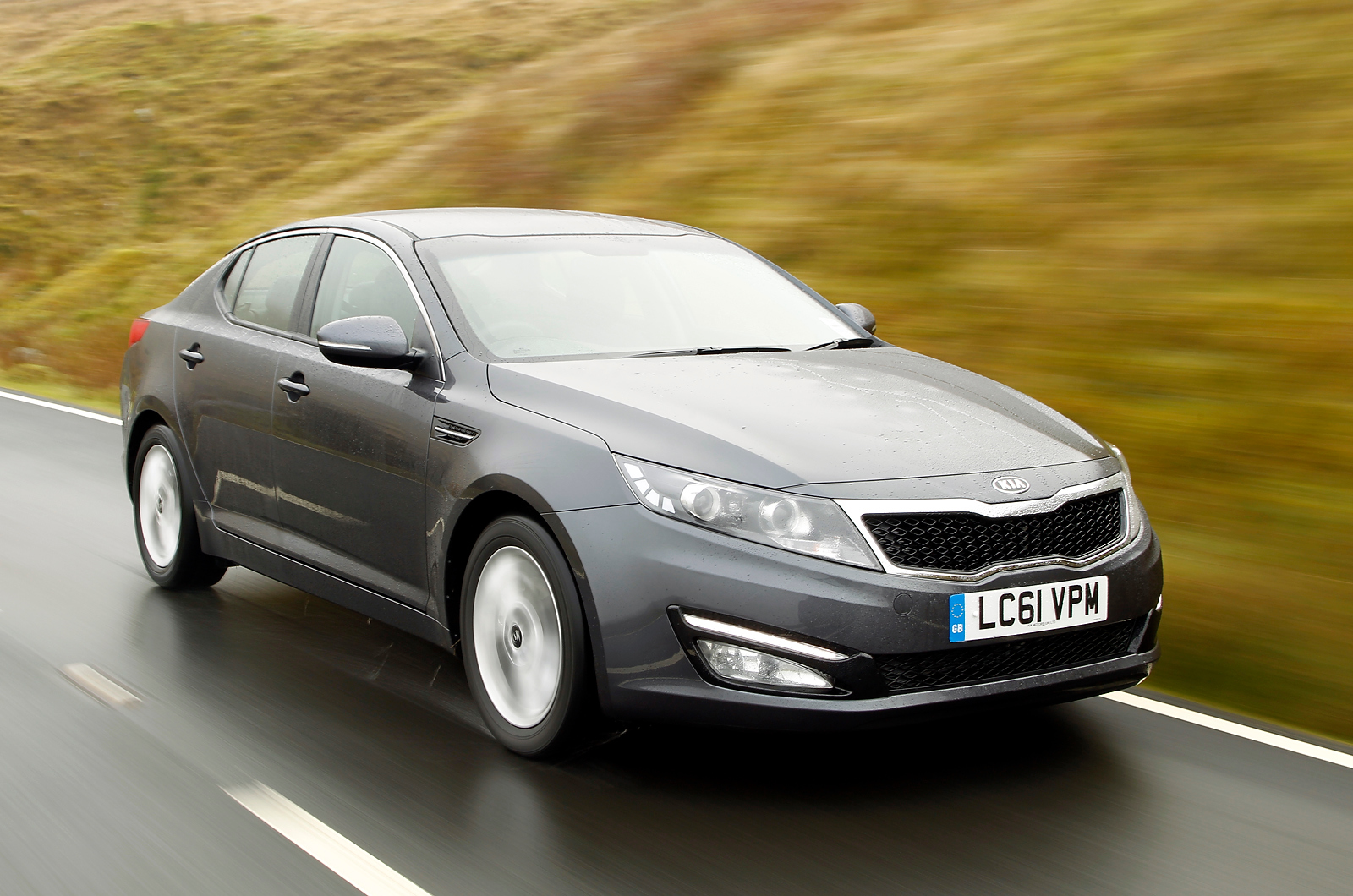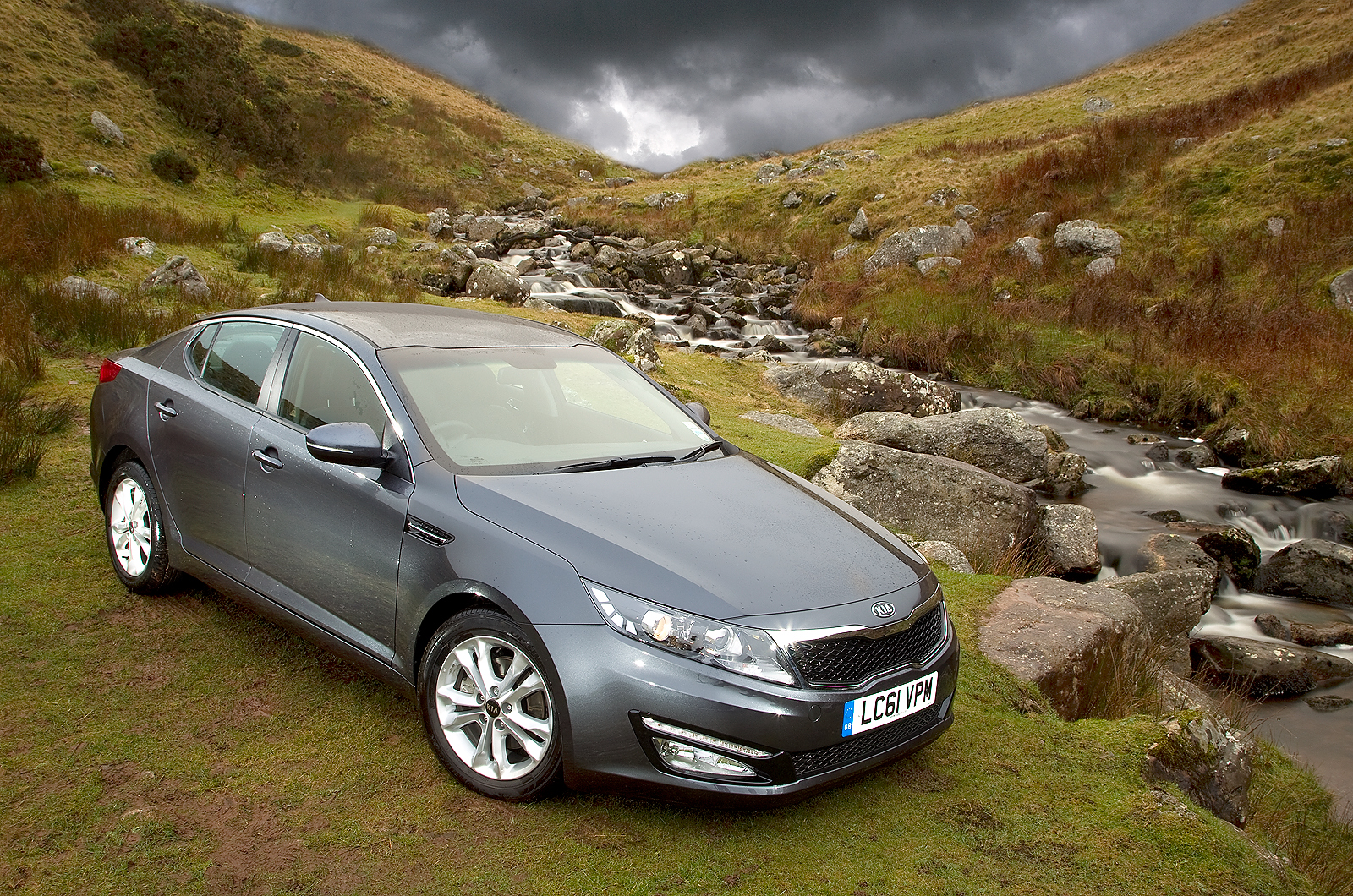The Optima name may be unfamiliar to Europeans, but the latest car is the third generation of Kia’s global saloon. Badged as the Magentis in the UK, the original 2001 model was supremely well equipped for the money, but it was as dull to look at as it was to drive. The 2006 follow-up was a better effort, but it wasn’t until the 2008 update that the car finally began to make a gentle, no-nonsense impression on value-conscious buyers.
Towards the end of 2011, we suggested that, with the arrival of its new Rio supermini, Kia had established a brand identity based on cars that were moderately pleasant to look at, moderately pleasant to sit in and moderately pleasant to drive. Damning with faint praise, perhaps, but not so long ago that approach would have been sufficient to make waves in the staid saloon-sized D-segment. Not any longer.
Wary of the fiercely competitive (and unashamedly aspirational) executive market above it, mainstream manufacturers have spent the past decade turning their starchy four-door stock options into veritable blue chips. If Kia hopes to win buyers in this saturated marketplace, the new Optima will have to live up to the current high standard and give fleet buyers a reason to switch from the established class leaders. Quite a challenge, but the car has already established itself as the top seller in Korea and has apparently garnered quite a lot of attention in the US. Time to find out if its fledging reputation is deserved.



